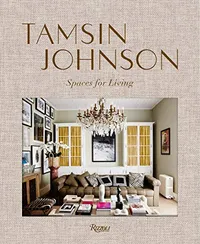How can I make my bathroom look expensive? 10 designer tips for a high-end look – and they don't have to cost the earth
If you want to make your bathroom look expensive, you needn't settle for cheap chic. These tried-and-tested design tricks will give your home plenty of luxe-appeal
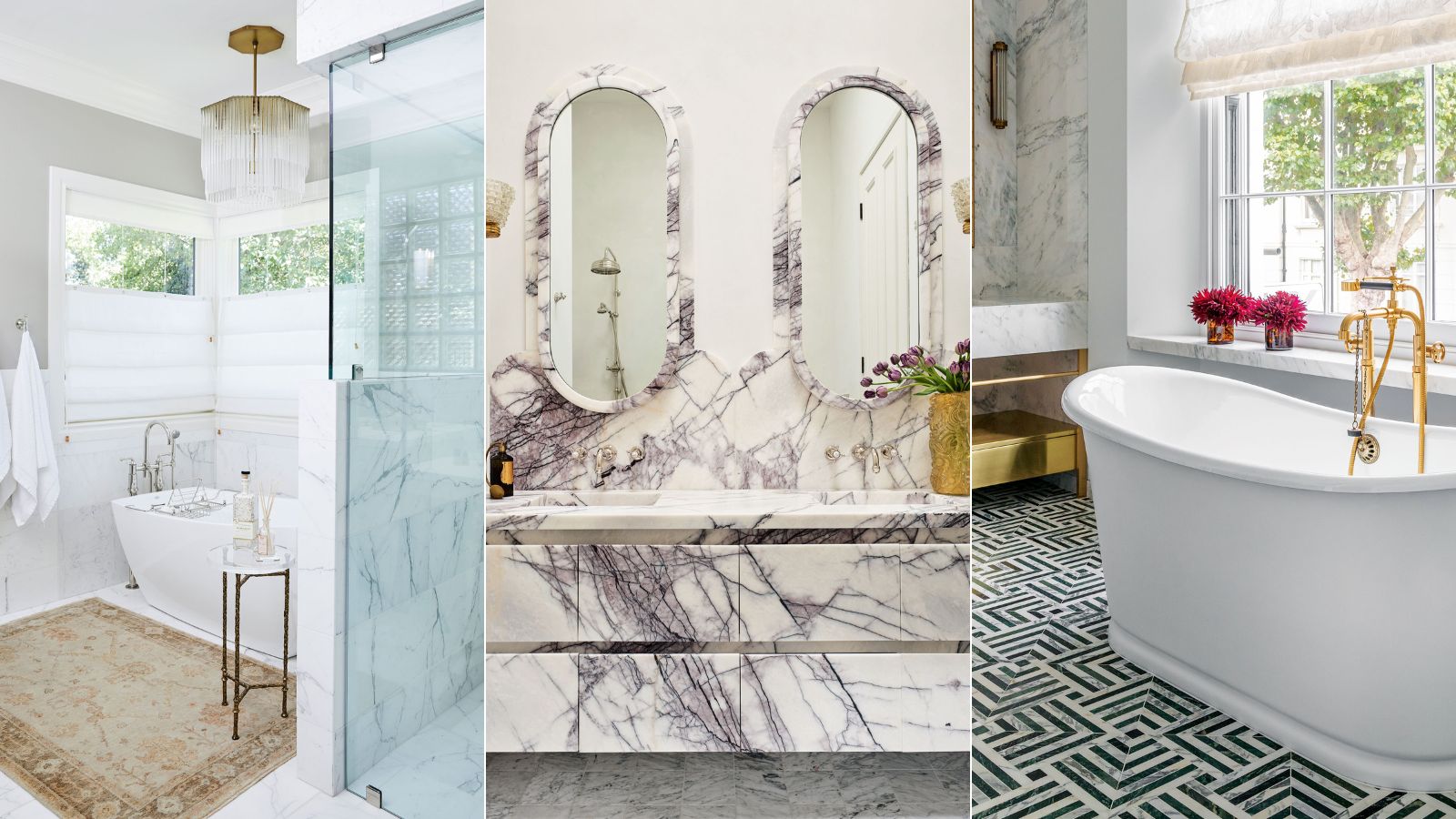

Linda Clayton
The most indulgent, luxurious, and expensive-looking bathrooms are all about comfort and character, therefore, the materials you choose will be of utmost importance in this room.
But before you invest in a complete revamp, think critically, because spending a small fortune on fixtures, fittings, and paint does not always guarantee a smart, tailored, or value-for-money look.
Bathroom transformations don’t always have to be grand or expensive affairs. Instead, they can be slowly curated through minimal updates that don’t break the bank but leave your space looking expensive and luxurious. All your luxury bathroom needs are a few thoughtful details to give it that five-star status that you have always desired.
How can I make my bathroom look expensive?
Creating the ultimate bathroom retreat should be a multisensory experience; a visual masterpiece that still maintains the functionality that you'd expect from this space.
From clever tricks to make a bathroom look elegant with mirrors and paint to wonderful ways with lighting and storage, our designers' beautiful but economical decorating ideas will help you curate a bathroom that looks luxurious and expensive.
Here, interior designers and bathroom experts share with us their favorite ways to make a bathroom look expensive.
1. Put the focus on the flooring
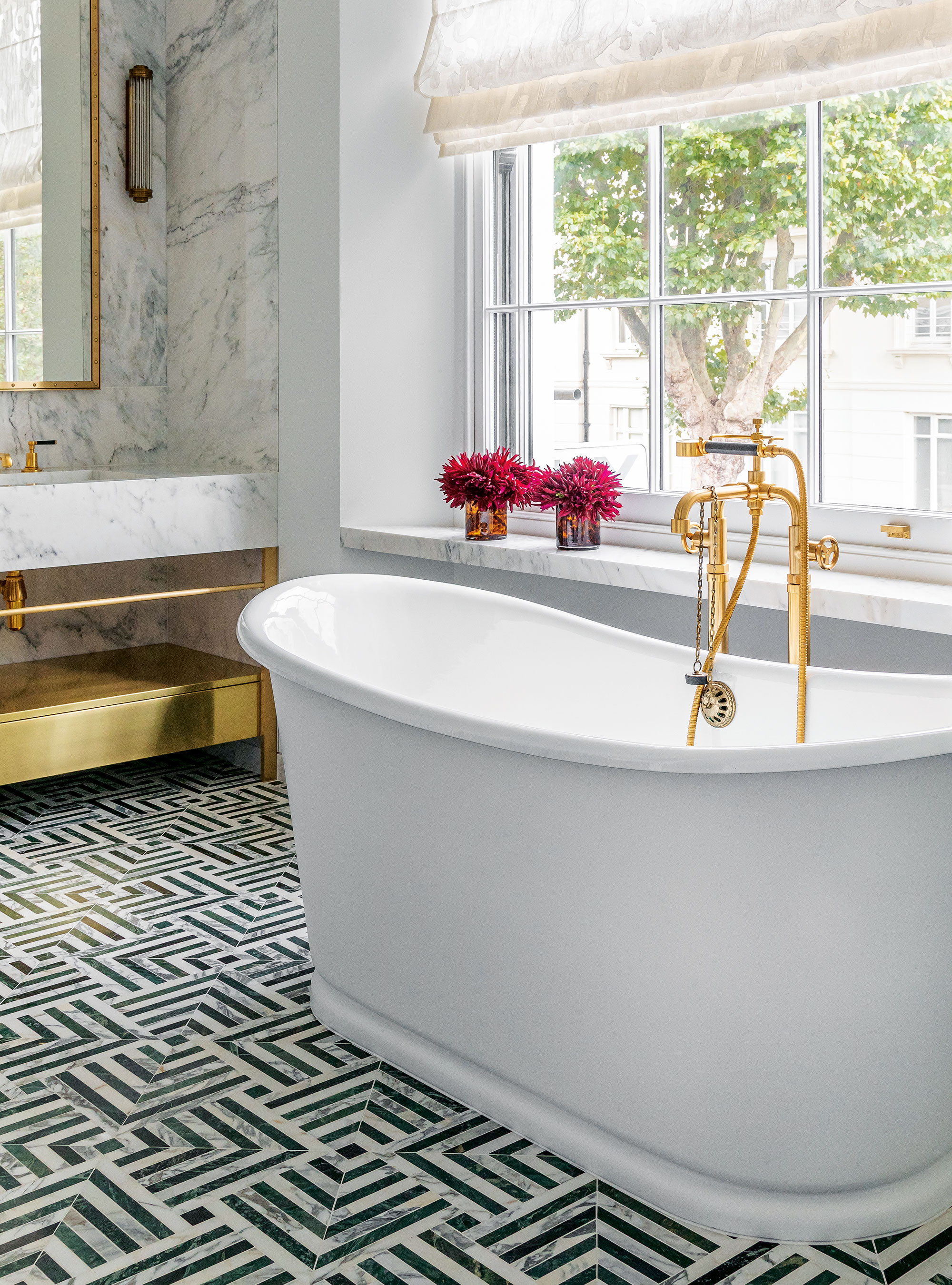
Be brave with your bathroom flooring ideas for a space that is eye-catching and unforgettable.
Design expertise in your inbox – from inspiring decorating ideas and beautiful celebrity homes to practical gardening advice and shopping round-ups.
‘Using a bold floor tile is a wonderfully effective way to elevate a bathroom – it grounds the room, emphasizes the sense of space and scale, and packs a chic punch without being too overwhelming,’ enthuses interior designer Samantha Todhunter.
To appreciate the point, simply imagine this space with plain floor tiles: the impact wouldn't be as significant or expensive in appearance.
2. Add a luxe tub

If space allows, a luxurious tub will secure your main bathroom or en suite bathroom’s sanctuary status.
‘The bathtub is perhaps the one space in a home without interruption from the outside world, so we always recommend making it as indulgent as possible,’ says Louise Lythe, associate director, of David Collins Studio. ‘Facing the bath to enjoy views outside can enhance that sense of drifting off, creating time to fully recharge.’
3. Marvel at marble
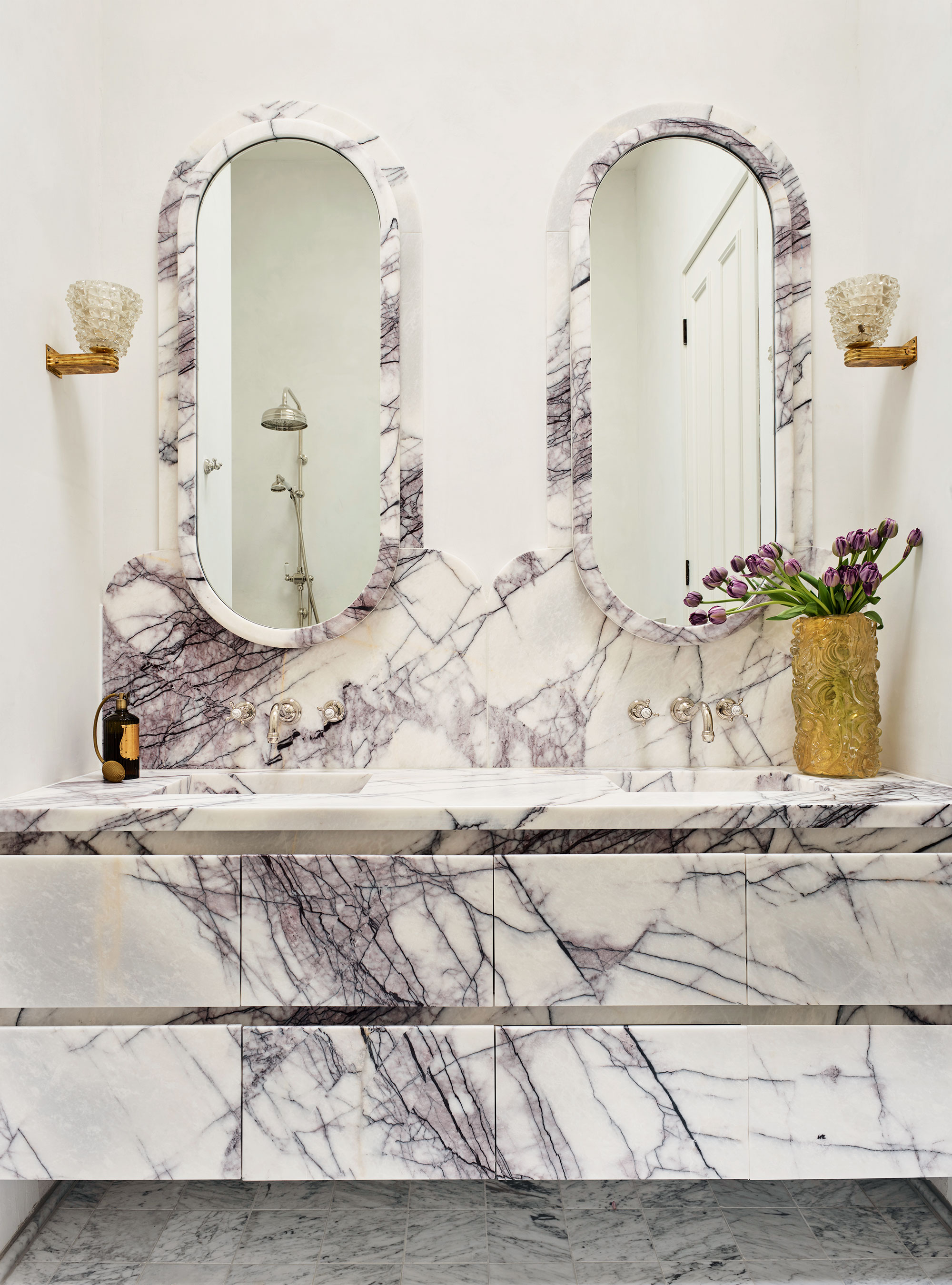
This enduringly popular material is sure to evoke a sense of luxury and elegance. It is certainly not a budget option but the beauty of marble is that you can add it to your bathroom in varying amounts and it can still have a big impact.
Here, more is undoubtedly more here in this divine bathroom by Australian interior designer Tamsin Johnson. Decorative New York marble envelops the vanity unity, climbs the walls and wraps around the lozenge-shaped mirrors.
To avoid a marble bathroom from looking too cold or sterile, add warm metal finishes like gold, brass and copper, or even better some pattern to dial up the visual interest.
Spaces for Living, Tamsin Johnson| $48.30 at Amazon
The first book from Australian interior designer Tamsin Johnson, known for her fresh interiors that evoke luxurious ease and coastal sophistication.
4. Evoke country house chic with decorative flourishes
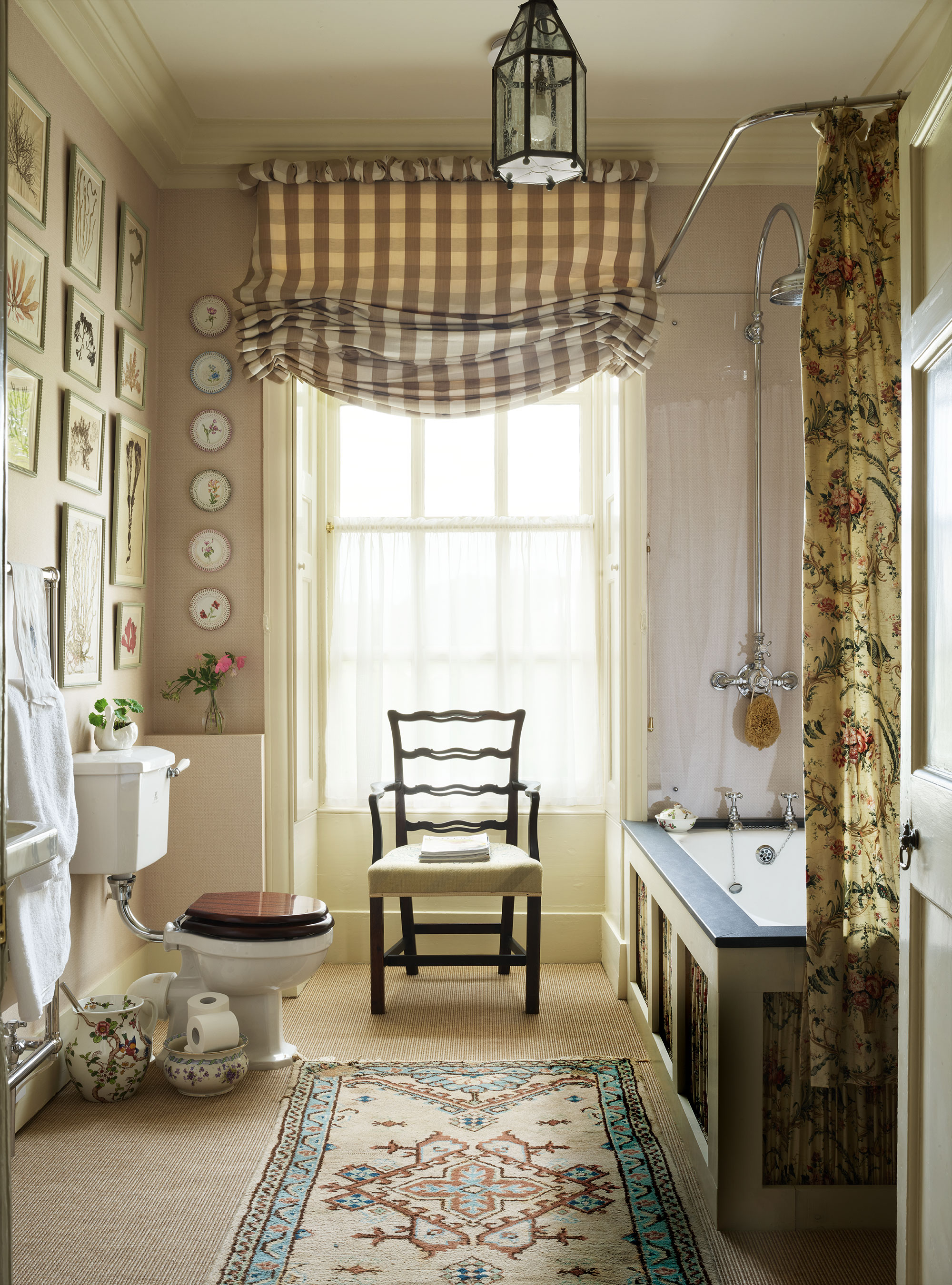
One of the important things about designing a bathroom – especially in a rural area – is that it doesn’t seem utilitarian. We like to make sure that it feels like any other decorative space, with antiques and freestanding elements.
Interior design practice Salvesen Graham was adamant that this scheme would have the feeling of a ‘room’. ‘It has all the features you’d expect of a country house interior,’ says Nicole Salvesen. ‘We used fabric wherever we could, added antiques, wallpaper (Lattice by Nile & York), a blind and a generous fabric shower curtain. It is practical but ultimately comfortable.’
5. Celebrate the beauty of tactility
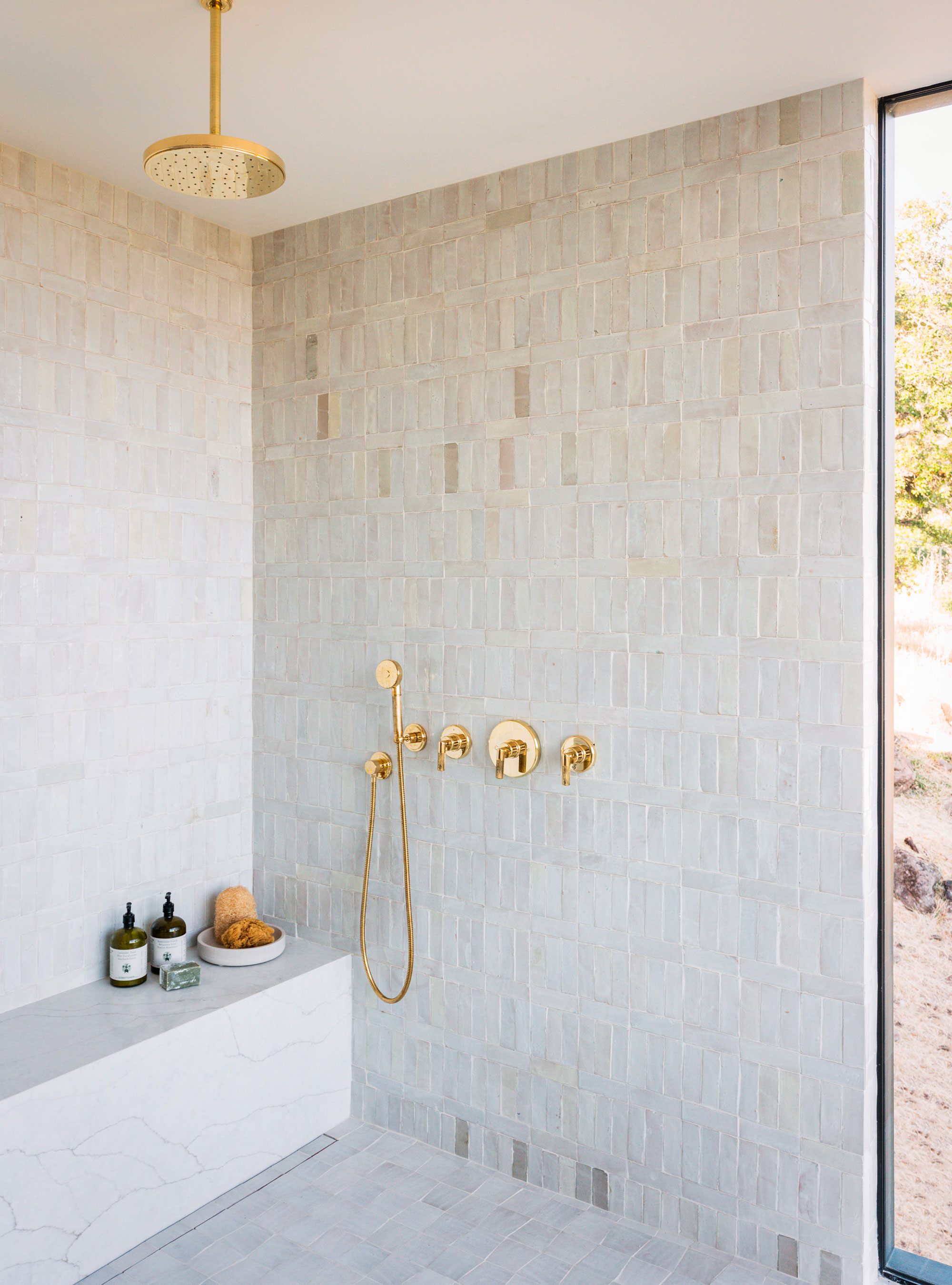
Visual texture is without a doubt one of the best ways to create a bathroom that looks expensive. From handmade tiles to exposed timbers, use texture in interior design to create an expensive and well-thought-out space.
Textured surfaces are not solely about looks; functionality also comes into play, even in a bathroom designed for pure aesthetic appeal. ‘For bathrooms especially, it’s important to approach materiality from both a practical and aesthetic perspective,’ agrees Deborah Bass, creative director of Base Interior.
Here, highly textured tiles are given a glamorous edge when combined with brass fittings. Shown here is the Pinna Paletta collection by Kallista in unlacquered brass at West One Bathrooms. Over time, the brassware will develop a patina, bringing further texture to this serene space.
6. Invest in bespoke storage solutions
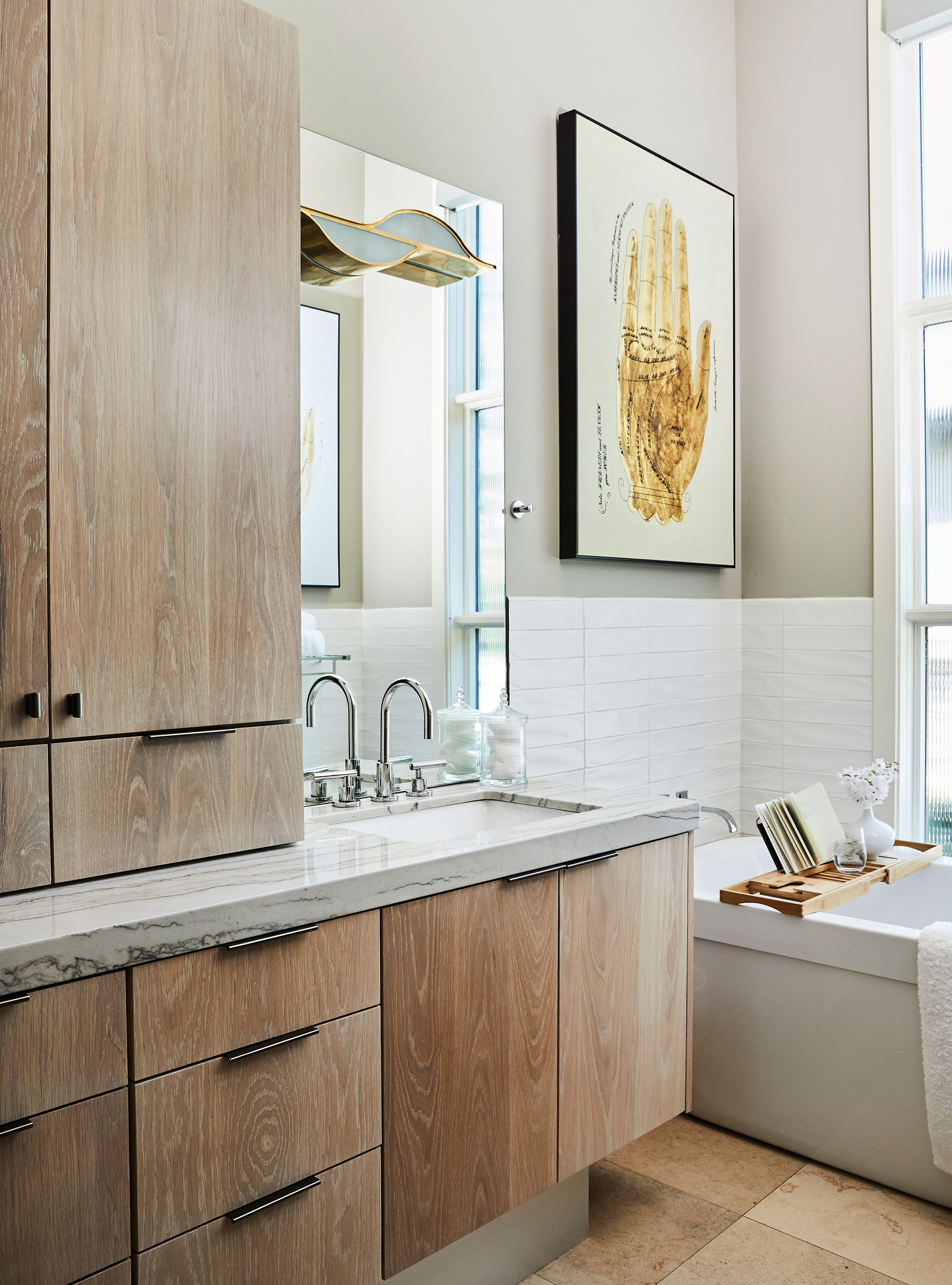
Bespoke bathroom storage is streets ahead of off-the-shelf when it comes to making a bathroom look expensive. Commissioning made-to-measure storage is especially worthwhile if you have wonky walls or unusual angles that simply will not accommodate the standard sizes of off-the-shelf furniture.
Here, Utah-based Jessica Bennett of Alice Lane Interior Design has utilized the formally redundant wall space to create bespoke small bathroom storage that’s designed for both displays and as a contrasting style statement. Contrast in interior design is often cited as an interior designer's secret ingredient for adding balance to a scheme and can be done by combining contrasting materials, colors, and textures to add visual weight.
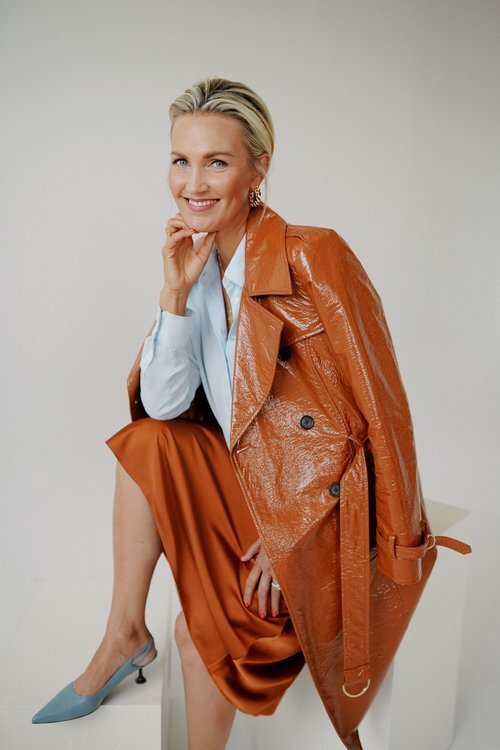
Jessica Bennett is the owner and principal designer of Utah-based Alice Lane Interiors. Know for quality and timeless interiors, Jessica has spent time in the US and abroad designing high-end commercial and residential properties.
7. Create calm with soft features and details
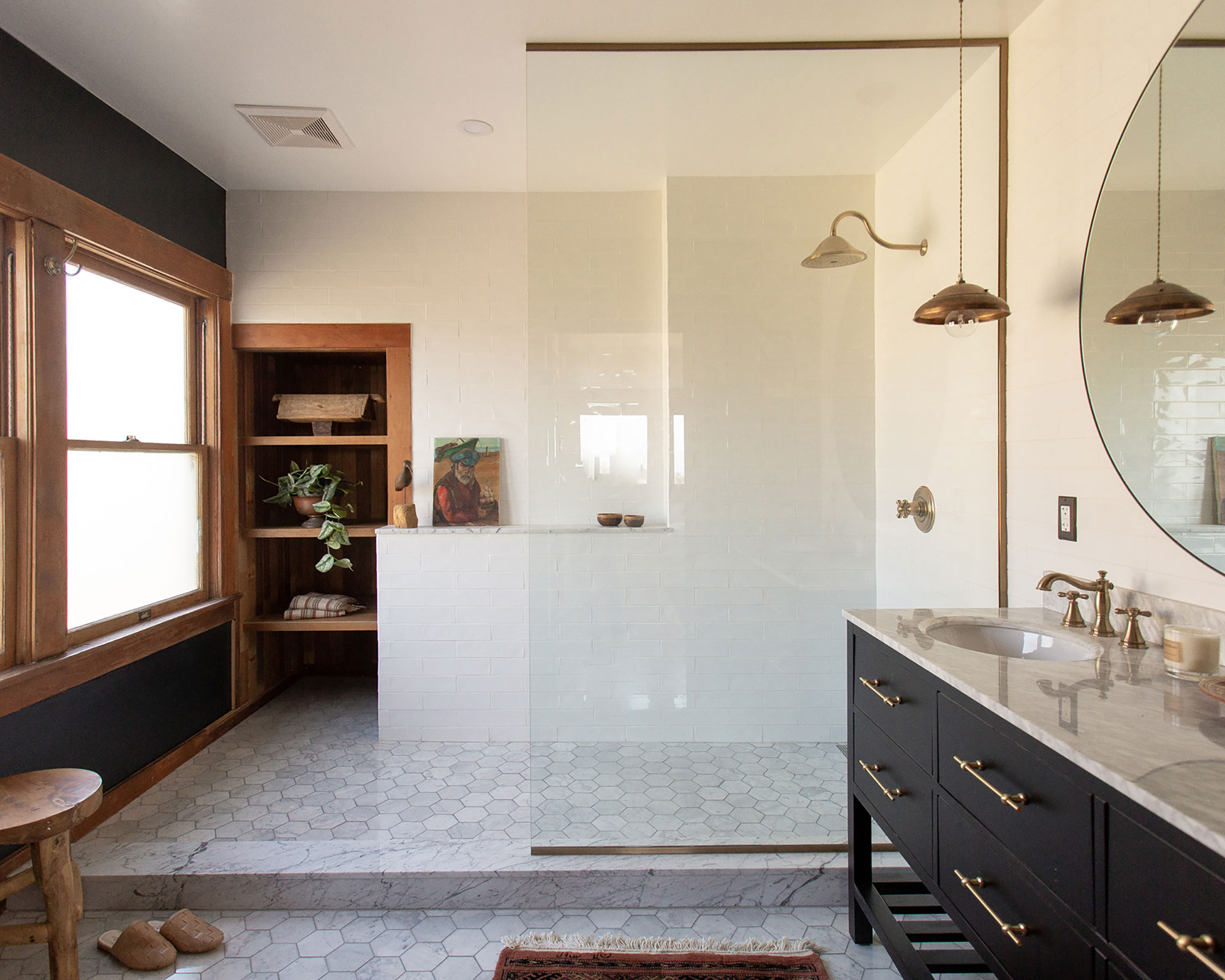
Elegant and luxurious, a spa-style bathroom that focuses on well-being is an important bathroom trend that we should pay attention to.
When it comes to designing a wellness bathroom, the luxury of space itself can provide a huge advantage. In this generous space in downtown Los Angeles, interior designer Jamie Haller was lucky to work with a blank canvas, large windows, and the potential to incorporate a vast walk-in shower area.
The balance of textures was key; natural timber, textured surfaces, and rounded mirrors all serve to soften the hard surfaces while enhancing that sense of lavishness usually only experienced at the most exclusive spa resorts.
8. Let your powder room become a talking point
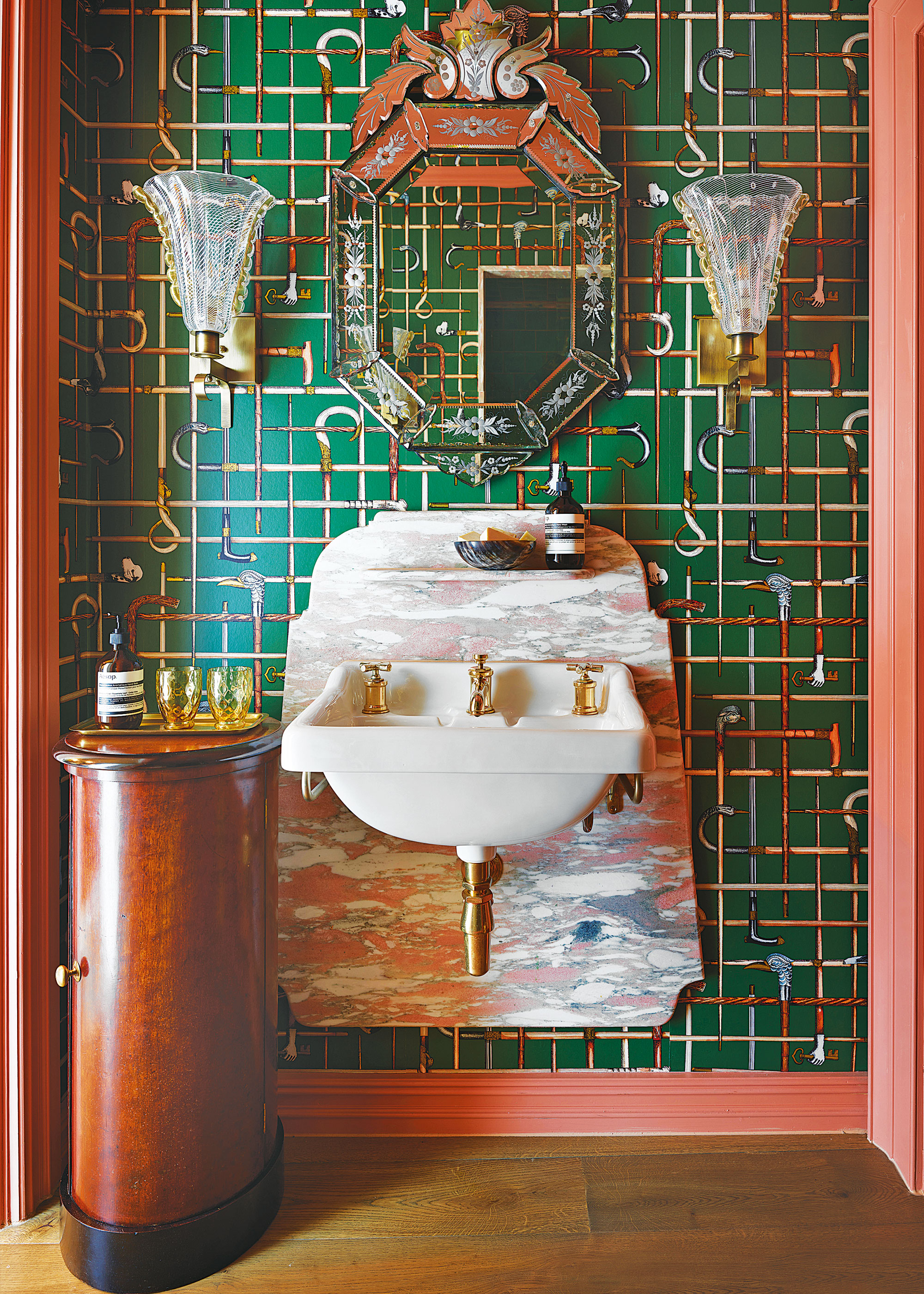
A powder room with bold aesthetics feels luxurious – and guests will be impressed. The only rule to decorating a powder room is there are no rules; be as brave and decadent as you dare. As transient spaces, there’s little chance you’ll have time to feel overwhelmed by bold decisions.
Follow the lead of interior designer Martin Brudnizki, who has created a veritable feast for the senses in his own country home. Mixing lavish materials, playful print, and ornamentation, this is a room guests will never forget.
9. Plan a hotel-style bathroom
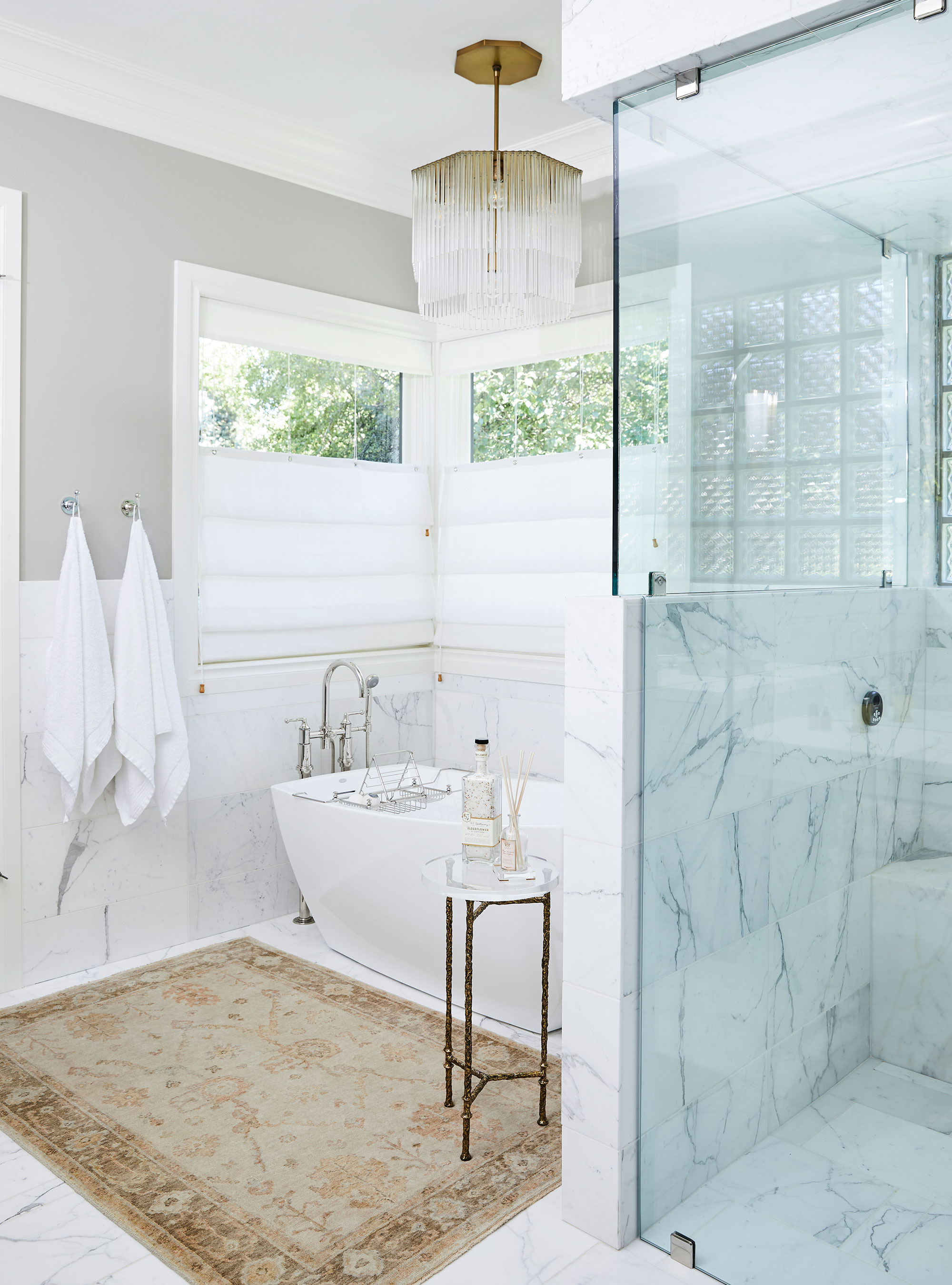
As every square foot has a monetary value in a hotel, bathrooms tend to be quite small. But I’m surprised by how much you can fit into a small room, and hotel work forces us to test that to the limit. Quite often a small space can be quite cozy, interesting, and exciting. Although an oversized bathroom can seem glamorous, often you can feel vulnerable standing naked in a huge space. It is important to be careful about the choice of materials because acres of tile and glass can be cold and echoey; acoustics can have a huge influence on the atmosphere of a space.
'Texture, pattern, color and upholstery can all add softness to what is usually a clinical space,' Jessica Bennett of Alice Lane Interior Design. 'A bathroom rug can add an extra layer of warmth underfoot, while elegant light fixtures exude the opulence you would find in a five-star space.
10. Visually excite with color
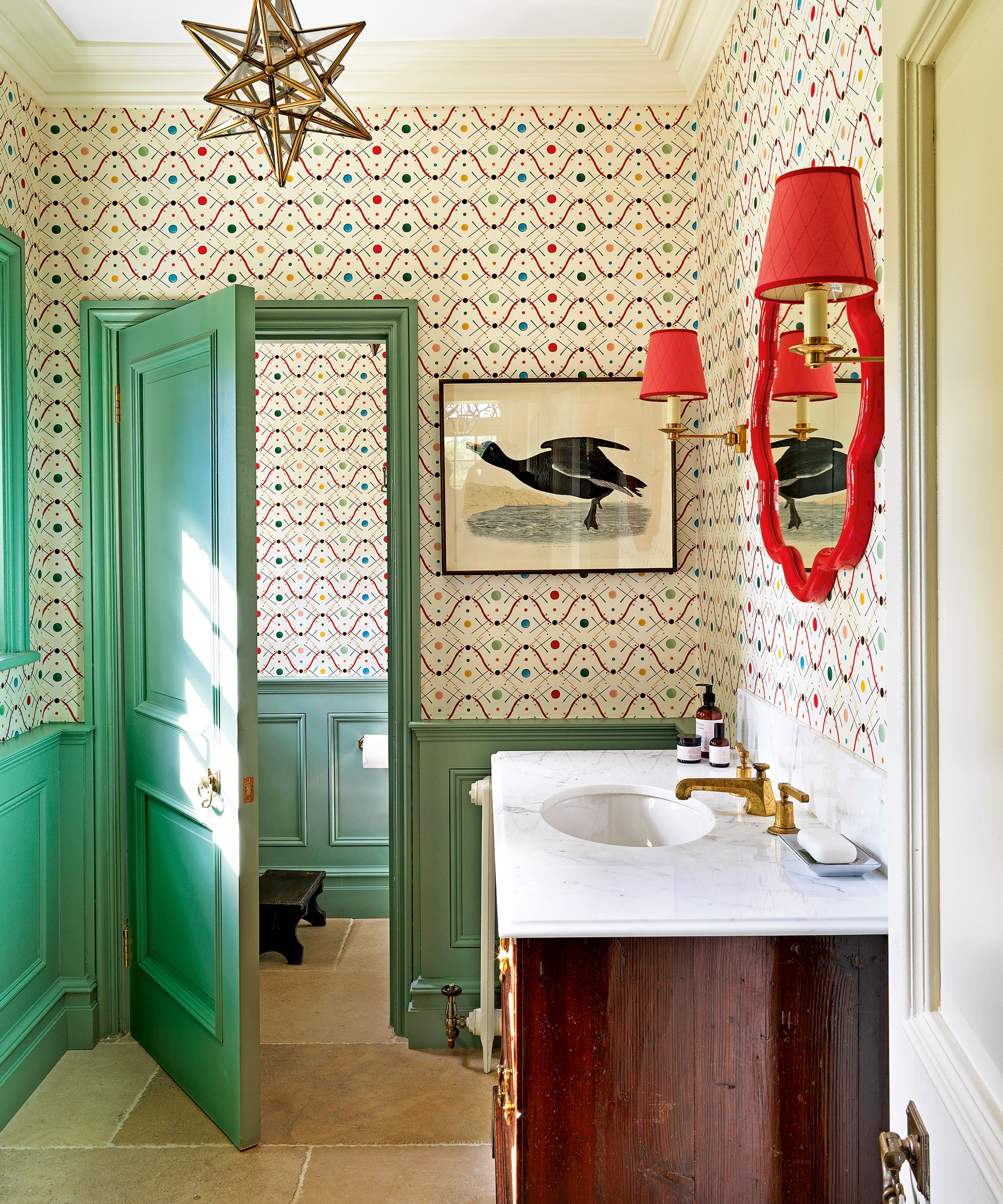
'Bathrooms can be clinical spaces, so I work hard to make them the very opposite,' says interior designer Lucy Barlow on adding color for an inviting scheme. 'I want them to feel inviting, by injecting bathroom color with a considered choice of tiles or painted joinery.'
'I also enjoy using wallpaper. Most high-end bathroom brands make lovely papers in vinyl quality, which are ideal for bathrooms as they won’t peel. Another option is to paint clear varnish over wallpaper to prevent peeling.'
In this colorful bathroom in the home of Aurelia Skincare founder Claire Vero, Salvesen Graham has expertly worked color and pattern. ‘Picking up a color tone in the wallpaper on the paneling and woodwork is a lovely way to introduce a further element of decoration to a scheme,’ says co-founder Mary Graham. ‘For practical reasons, paneling can also provide additional resistance to everyday wear without diluting the bathroom wallpaper's power to impress.’

Jennifer is the Digital Editor at Homes & Gardens, bringing years of interiors experience across the US and UK. She has worked with leading publications, blending expertise in PR, marketing, social media, commercial strategy, and e-commerce. Jennifer has covered every corner of the home – curating projects from top interior designers, sourcing celebrity properties, reviewing appliances, and delivering timely news. Now, she channels her digital skills into shaping the world’s leading interiors website.
